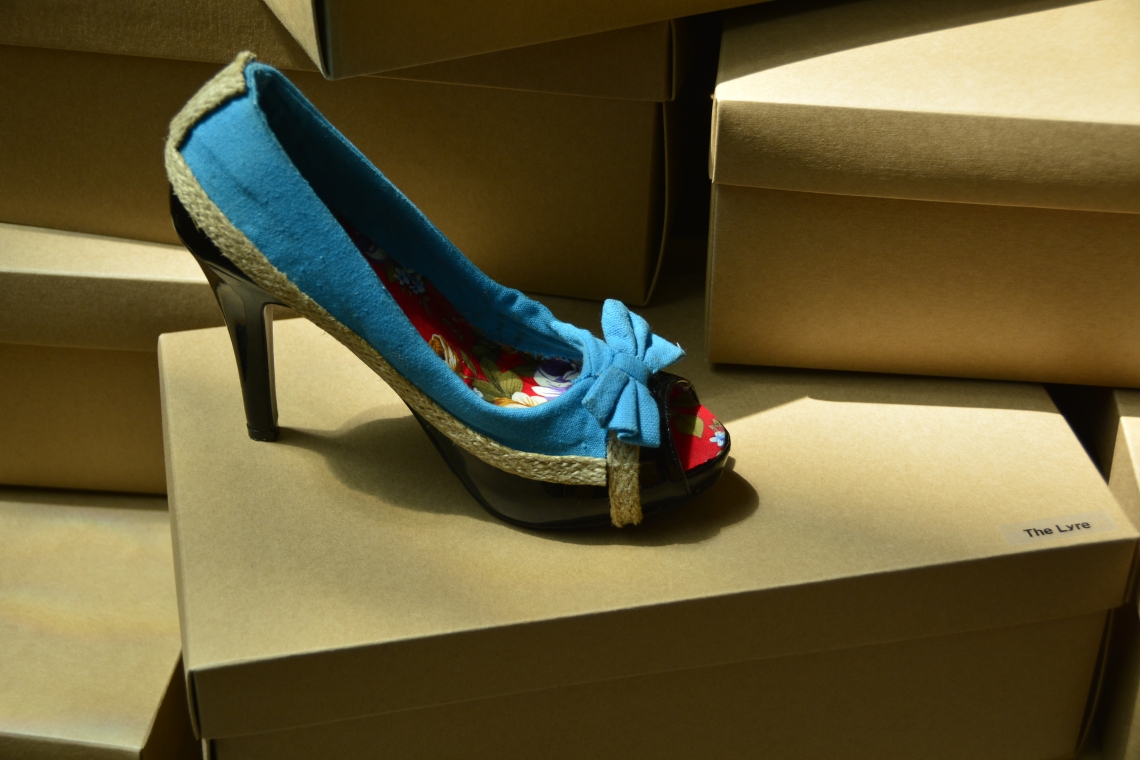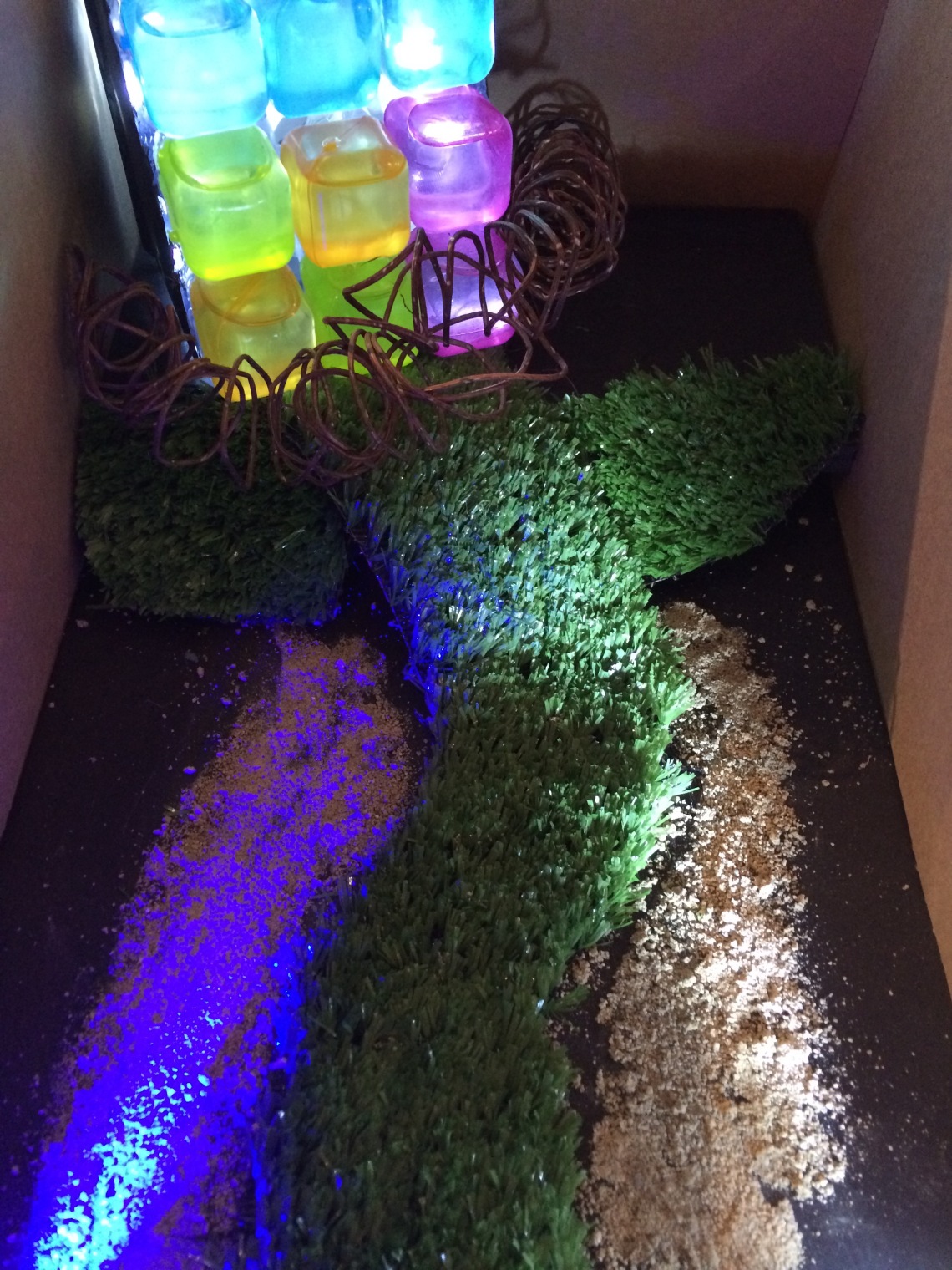The site I chose and was inspired by for our Arcade project was the intersection of Queen Street East and the Don Valley Parkway. The area is currently being paved away for a series of high rise luxury condos, complete with artificial lawns and strategically constructed floors wherein units have no upstairs neighbours. It was this architectural design that stuck with me, the building resembling a series of drawers being pulled out of a cabinet, as opposed to a traditional high rise building.

The final product makes for a visually striking building. It drew my mind back to my brothers and I playing with LEGO blocks, building spaceships or cars of impractical shapes, but looked visually imposing or exciting. This began my thought process of the site as a playground for the architect and land owner, who collaborate in constructing and selling these condos as accessible play areas to grow or imagine life in a creative way.
De Certeau named architects and those living in high rises on the 110th floor in New York City as gods amongst mere ordinary practitioners, that the “desire to see the city preceded the means of satisfying it” (de Certeau 92). This quote interested me and connected to my intersection because of the surrounding area of Regent Park, now undergoing the controversial Revitalization Plan meant to gentrify the area. The visually appealing condos and promotional images encouraging passersby to ‘dream’ and ‘rethink’ not only insinuates Regent Park is in need of rejuvenating, but is also full of potential, for those who can ‘see’ its future worth. However, when considering the prices of pre-build condo units, only those of a higher middle class can afford to truly see this opportunity. Like New York, and unlike Rome or Montreal, the area is reinventing itself, rather than performing its history and embracing “the art of growing old” (91). It is this same choice of words that I connected to the LEGO-like building, this apparent fascination of moving this area forward, embracing its possibilities and pushing it into the future, but only doing so by reverting back to a familiar image from the past.

This thought fed into the creation of my shoe; a high heel combined in various ways with a deconstructed slipper. I wanted to play on familiarity and the shiny new possibilities of shoes. I was also struck with Sally Munt’s reading of the flâneur Frenchy who walked around with her very own “portable Freudian phallus” (Munt 8). The idea of performing flâneur drag with found objects to access the otherwise inaccessible masculine streets implies an impossibility: Safety is forever out of reach and must be attained with a performance. Similarly to the butch Frenchy who further spruces in the bathroom once home, the safety of her as butch is out of reach at home as well, and must be attained through performing virgin heterosexuality. While my shoe was not a found object, I was motivated by Munt’s focus on performing familiarity to access safety. I wanted to create a palimpsest product which encourages its wearer to dream of the possibility of a high heel with the comfort of a slipper, to reimagine this familiar object known for its discomfort as suddenly entirely familiar, and in fact even playful. Whether the shoe’s comfort is a lie or not is irrelevant: The product itself is the dream, the encouraging of imagining that such a heel could exist. The shoe is instead a promotional suggestion, with a literal bow on top.

My shoebox entitled The Lyre was inspired by the site I had chosen, and similar to the set-up of one of the condos currently being built at the intersection, my colourful fenced-in condo is being built atop a dirt hill with a specific walking path. Whilst the view of it is more head-on than a flâneur passerby would see, I still wanted to recreate the itching voyeurism of wanting to know what is so colourful and fun and yet blocked off from the rest of us.

These de Certeau Gods who live in the colourful building have created not only a fortress that we cannot access due to the gates, but are also trying to deter a flâneur from walking by. Had I more time to work on my shoebox, I would have considered moving the grass path off-centre to further highlight the many shortcuts a flâneur takes in navigating space, disregarding specific geographic and architectural design (de Certeau 98-99).
I was also inspired when I listened to the recordings I had taken from my site and found the sounds of the birds overhead and the high pitched construction noises often times sounded very similar in my headphones. While searching for further information on birds in urban areas, I came across the lyrebird, whose natural ability to mimic sounds can often include man-made construction sounds if the bird is in the construction area and later moves to a more suburban environment (see YouTube link). This unseen bird I found to be a displaced flâneur, previously a comfortable voyeur and later a marked and alienated being.
In making the shoe and shoebox, I wanted more time to fully develop how to integrate the theory we were exploring in the institute. As written in darlingARCADE, the artist Joanna Donehower had successfully collapsed the public and private spaces she had represented, a theme that I believe is important for the same themes I was tackling (Janssen 170-171). I found myself often searching for the flâneur, first acting out how the flâneur would physically navigate the city and our sites, and then trying to expand my mind beyond limitations in the creation of our mini-landscapes. I then realized perhaps the very act of chasing the flâneur in these instances was in fact simply being a flâneur, as de Certeau later concludes that “to walk is to lack a place” and that perhaps the city itself is a culmination of these exercises, “broken up into countless tiny deportations” (de Certeau 103). After all, in commemorating a space, creating both a representation and inspired object, we then handed our finished products to the public with miscellaneous directions. Is not then an audience member receiving a different performance, being a flâneur themselves, deported from one experience to another, one who knows every step we took to theorize our finished products, and another who receives, as far as they are concerned, a shoe and its corresponding shoebox?
– Tabia Lau
Works Cited
De Certeau, Michel. “Walking in the City.” In The Practice of Everyday Life. Berkeley: University of California Press. 91-110. Print.
https://www.youtube.com/watch?v=C0ZffIh0-NAx
Janssen, Shauna. “darlingARCADE: Queering the Postindustrial Landscape.” Dissertation Chapter + Images. Print.
Munt, Sally R. “The Lesbian Flâneur.” In The Unknown City: Contesting Architecture and Social Space. Ed. Iain Borden. Cambridge, Mass.: MIT Press, 2001. 246-261. Print.

